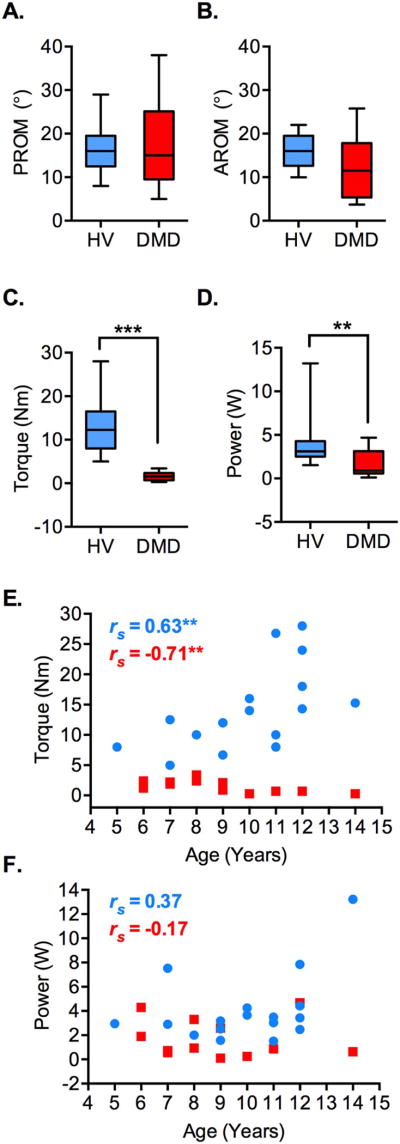Figure 2.
Biomechanics of the volitional ankle dorsiflexion exercise in DMD participants (DMD, n = 12, red) and the healthy volunteers (HV; n = 18, blue). A–B. The passive range-of-motion or PROM (A) and active range-of-motion or AROM (B) for ankle dorsiflexion were not significantly different between the DMD participants and the healthy volunteers (p = 0.958 and p = 0.181, respectively). C–D. The ankle dorsiflexion torque measured by the ankle device (C) and the power exerted over the course of ankle dorsiflexion exercise (D) were significantly reduced in the DMD participants relative to the healthy volunteers. E. Whereas ankle dorsiflexion torque decreased with age in the DMD participants there was a gain in the torque value with age in the healthy volunteers. Note that at all ages the ankle dorsiflexion torque values are lower in the DMD participants than the healthy volunteers. F. Graph shows no significant relation between age and power exerted during the ankle dorsiflexion exercise in the healthy volunteers (p = 0.127) and DMD participants (p = 0.581). Box and whiskers represent 5th – 95th percentile values (A–D). Spearman’s r (rs) is shown (E–F). **p < .01, ***p < .001.

